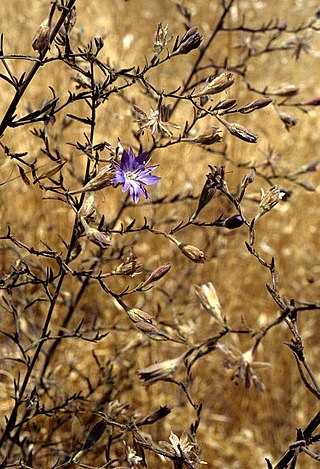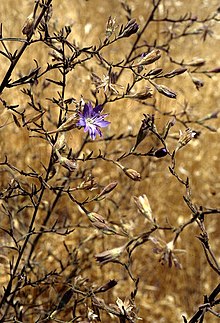
Alonsoa is a genus of 12 species of flowering plants in the family Scrophulariaceae. The genus includes both herbaceous and shrubby species.

Soliva is a genus of South American plants in the sunflower family. Burrweed is a common name for some species in this genus.

Hipólito Ruiz López, or Hipólito Ruiz, was a Spanish botanist known for researching the floras of Peru and Chile during an expedition under Carlos III from 1777 to 1788. During the reign of Carlos III, three major botanical expeditions were sent to the New World; Ruiz and José Antonio Pavón Jiménez were the botanists for the first of these expeditions, to Peru and Chile.

Galinsoga is a genus of flowering plants in the family Asteraceae. It is native to North and South America and the West Indies, and naturalized in Europe, Asia, Africa, and Australia.
Sessea is a genus of 19 accepted species of shrubs, small trees and climbers belonging to the subfamily Cestroideae of the plant family Solanaceae. The flowers of Sessea are so similar to those of Cestrum that the genera cannot usually be told apart, unless the plants are in fruit. Then their distinguishing characteristics become immediately apparent; plants of the genus Sessea bearing dehiscent capsules dispersing winged seeds, while those belonging to the genus Cestrum bear juicy berries containing prismatic seeds. The flowers of both Sessea and Cestrum have tubular corollas that are long exserted from small calyces.

José Antonio Pavón Jiménez or José Antonio Pavón was a Spanish botanist known for researching the flora of Peru and Chile.

Conanthera is a genus of small bulbous plants with small panicles of blue, purple or white and purple flowers. Propagation is by offsets or seed. All species are native to Chile, but there is an old 18th-Century report of C. bifolia occurring in colonial Peru as well. This could possibly be attributed to changes in boundaries between the two countries, as modern sources list the species as endemic to Chile.
- Conanthera bifoliaRuiz & Pav. - from Valparaíso to La Araucanía
- Conanthera campanulataLindl. - from Antofagasta to La Araucanía
- Conanthera parvula(Phil.) Muñoz-Schick - from Valparaíso to La Araucanía
- Conanthera trimaculata(D.Don) F.Meigen - central Chile
- Conanthera urceolataRavenna - Atacama

Tessaria is a genus of South American plants in the tribe Inuleae within the family Asteraceae.

Moscharia is a genus of flowering plants in the family Asteraceae native to South America. It has two recognized species.
Plazia is a genus of South American plants in the family Asteraceae.

Chaetanthera is a genus of South American flowering plants in the family Asteraceae.
The Botanical Expedition to the Viceroyalty of Peru was a Spanish expedition to the colonial territories of the Viceroyalty of Peru and Chile between 1777 and 1788.

Cosmibuena is a genus of flowering plants in the family Rubiaceae. The genus is native to Chiapas, Central America, and South America as far south as Brazil.
Berberis flexuosa is a shrub in the Berberidaceae described as a species in 1802. It is endemic to Peru.

Columellia is a group of plant species in the Columelliaceae described as a genus in 1794.

Malesherbia auristipulata is a perennial woody shrub in the genus Malesherbia (Passifloraceae). Locally it is called Ají de Zorra. M. auristipulata is commonly found in Northern Chili and rarely in Tacna, Peru. In general, the species range is very restricted as a result M. auristipulata is considered a rare plant. It is likely that there are less than 100 individuals left, classifying the species as critically endangered by the local government.

Malesherbia deserticola is a subshrub native to the deserts and dry shrublands of Antofagasta and Atacama Chile. It can reach heights of 40 cm and has white racemose flowers.

Malesherbia humilis is an annual herb that grows in the subtropics of northern and central Chile to Argentina.

Malesherbia linearifolia is a subshrub native to the Coquimbo, Valparaiso, Metropolitana, and O'Higgins regions of Chile. It was the first member of Malesherbia to be described, with the original description dating to 1797 by Cavanilles.
Malesherbia scarlatiflora is a shrub native to the pacific slopes of Peru. It grows up to 1 meter tall, has narrow ovate-acuminate leaves, and orange flowers.















